I Ching, Yijing or Zhou Yi
"Oracle of the moon": © 2000 LiSe
 Yi Jing, Oracle of the Moon
Yi Jing, Oracle of the Moon


Yulin park,
the Garden of Pure Brightness
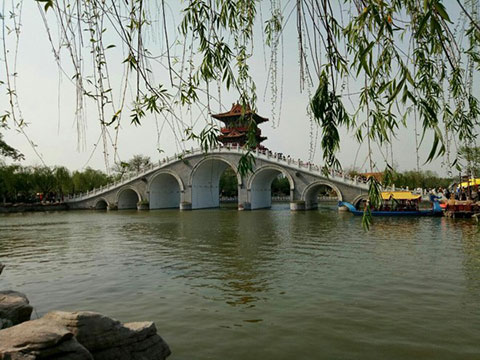
Verse 36
The spring scenery is bright
The colors of spring all new
Fresh desires at the waterside
Spring is bright and splendid without limits
I love the Qionglin banquets
The 'garden at the waterside' is the Yulin garden (or hunting park) of the emperor, where he often entertained guests.
At the Qionglin banquets
he invited scholars, poets and painters.
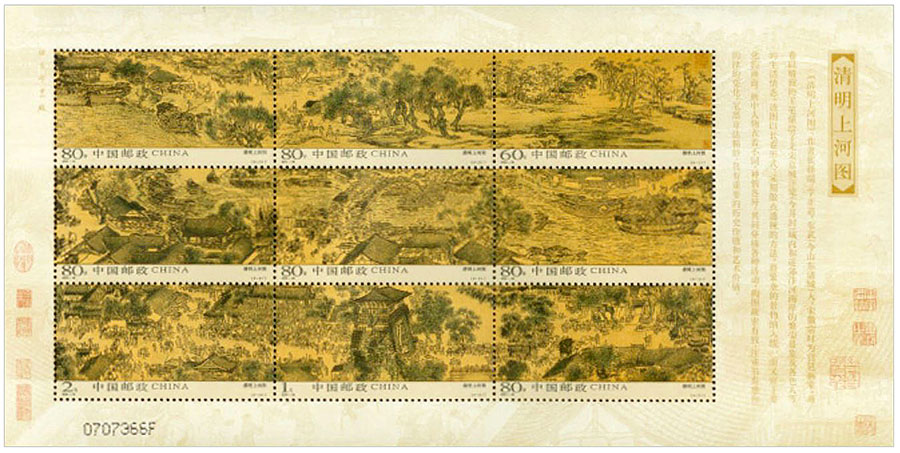
Nine stamps with details of the famous painting of the Yulin garden
by Zhang Zeduan.
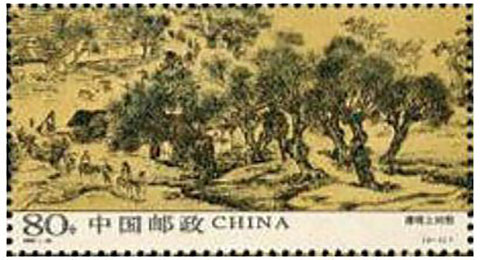

The entire scroll, on silk and with light colouring, was painted by Zhang Zeduan (960-1127), a famous artist of the Northern-Song-Dynasty. It is 24.8 cm wide, 528.7 cm long.
It reveals much about life in China during the 11th-12th century.
Its myriad depictions of different people interacting with one another reveals the nuances of class structure and the many hardships of urban life as well. It also displays accurate depictions of technological practices found in Song China. For example, it depicts one river ship lowering its bipod mast before passing under the prominent bridge of the painting. It shows ships in two major types, yet all of which have slung rudders for steering; the painting depicts freighters with narrow sterns or passenger boats and smaller craft with broad sterns, sailing upriver or docked along the banks while loading and unloading goods. Large stern sweeps and bow sweeps can be seen on at least three of the river ships, worked by up to eight men each.
It also shows how personal gardens had begun to take root in China - in addition to the immense walled garden on the far left of the scroll, for example, one sees several private gardens with their man-made mountains and rockery (for example, the small private garden close to the city gate, squeezed between a chemist's shop and a large building selling furniture, consisting of a small pond surrounded by trees and bamboo. See China.org
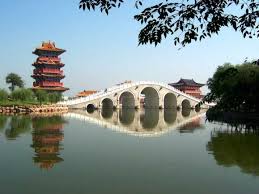
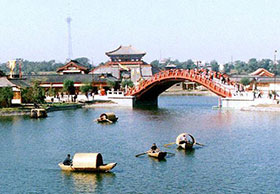
The Rainbow Bridge in Various Versions
Court artists of subsequent dynasties have made many re-interpretive replicas.
Below the original bridge and 5 replica's by others.
See Comuseum.com
The first bridge was built in 1050, and reconstructed in 1998. Four 9-meter (about 29 feet) high columns, two at either end of the bridge, replicate the poles that were weather vanes during the Song Dynasty.
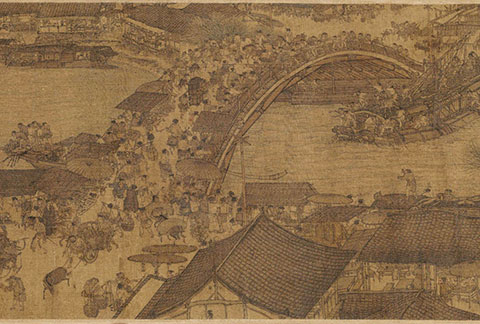
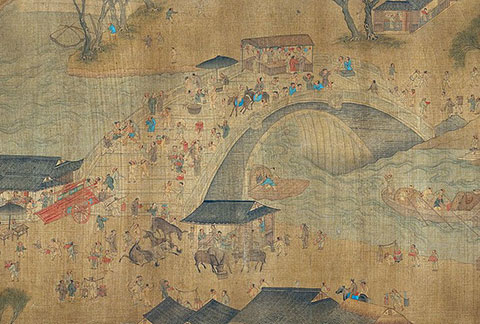
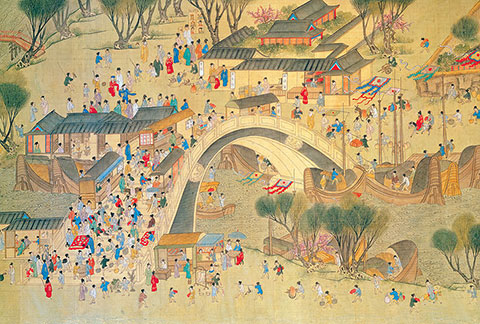
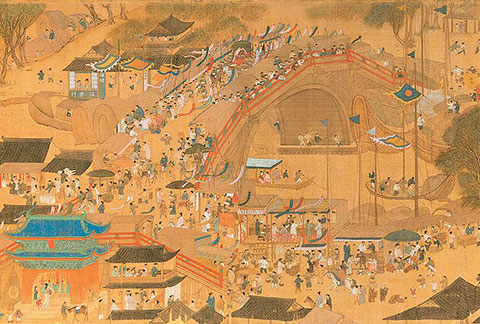
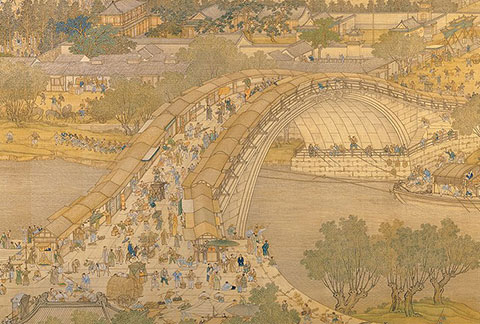
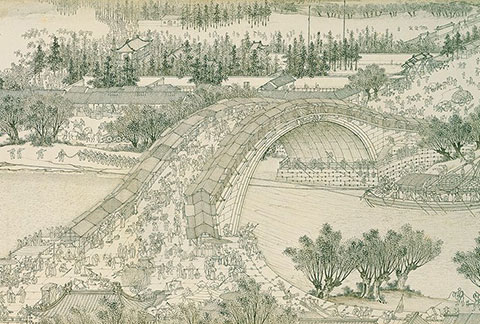
The Handscroll Format
Even though modern museums often display handscrolls stretched out full-length under a glass case, they were originally intended to be held by the viewer, who would unroll only an arm’s length section at a time. Starting at the right end of the scroll, and progressing to the left, the viewer determined the pace. With the use of perspective, the artist can make something seem to come closer and then to recede. A handscroll can show the same object from different angles, creating moments of suspense to entice the viewer to keep on looking.